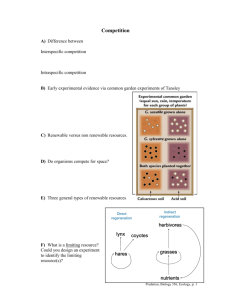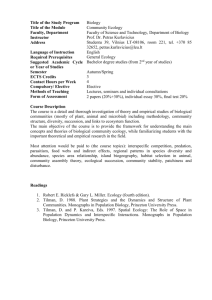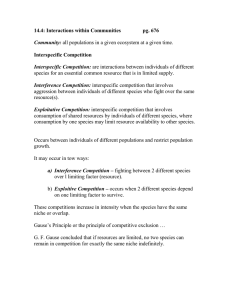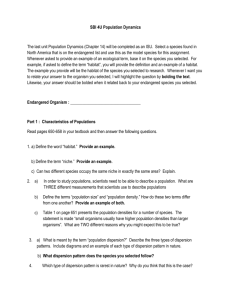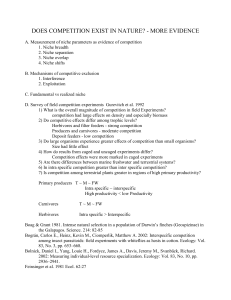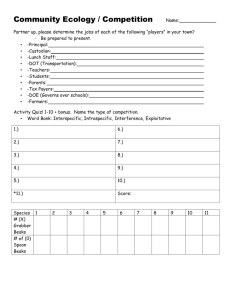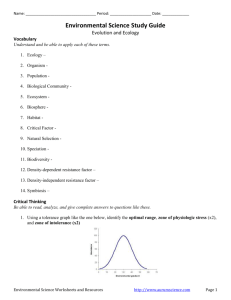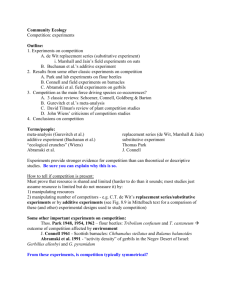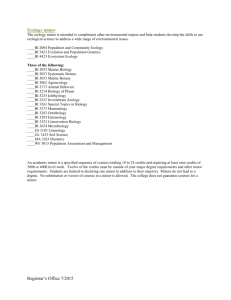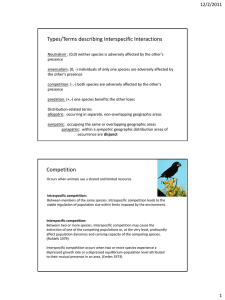Chapter 49 – The Biosphere and Biomes
advertisement
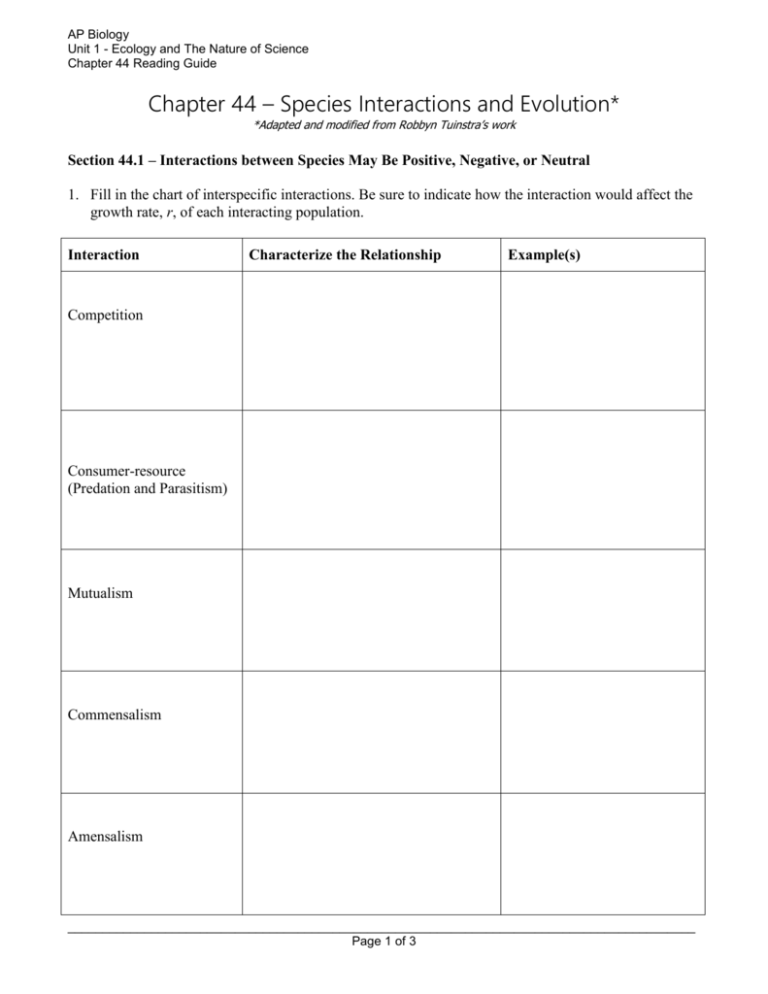
AP Biology Unit 1 - Ecology and The Nature of Science Chapter 44 Reading Guide Chapter 44 – Species Interactions and Evolution* *Adapted and modified from Robbyn Tuinstra’s work Section 44.1 – Interactions between Species May Be Positive, Negative, or Neutral 1. Fill in the chart of interspecific interactions. Be sure to indicate how the interaction would affect the growth rate, r, of each interacting population. Interaction Characterize the Relationship Example(s) Competition Consumer-resource (Predation and Parasitism) Mutualism Commensalism Amensalism __________________________________________________________________________________________ Page 1 of 3 AP Biology Unit 1 - Ecology and The Nature of Science Chapter 44 Reading Guide 2. Answer the Applying the Concept questions on p. 862. Section 44.2 – Interspecific Interactions Affect Population Dynamics and Species Distributions 3. What is the difference between intraspecific interactions and interspecific interactions? 4. Examine Figure 44.3. Use the results of that experiment to explain how population densities and growth rate may be affected by interspecific competition. 5. Interactions among populations may have an effect on densities of the species that interact. Predation represents an important interaction among populations. The curves below depict the population densities of three species: a small herbivore, a larger herbivore, and a carnivore. Identify which curve represents which of the species listed, and justify your answer by describing the changes in the population densities of these three species over time. 6. Interspecific interactions may also alter the distribution of a species. Explain how habitat restriction is illustrated in the example of rock and stellate barnacles in Figure 44.4. In your explanation, use the terms “fundamental niche” and “realized niche.” 7. Define and give an example of resource partitioning. Section 44.3 – Interactions Affect Individual Fitness and Can Result in Evolution 8. Explain how resource partitioning may allow competitors to coexist, and in fact, drive evolutionary change within a population using the example discussed in Figure 44.6. 9. Explain how consumer-resource interactions can lead to an “evolutionary arms race.” 10. Describe several defense mechanisms to predation that have evolved in animals. 11. What are the two components of fitness? __________________________________________________________________________________________ Page 2 of 3 AP Biology Unit 1 - Ecology and The Nature of Science Chapter 44 Reading Guide 12. Why might individual plants in populations within the geographic range of an insect herbivore contain high levels of defensive chemicals while individuals in populations outside of the insect’s range produce no defensive chemicals? 13. Describe specific examples of mutualistic interactions that have given rise to reciprocal adaptations (coevolution). 14. How are mutualisms significant in community ecology? How might these intricate ecological relationships evolved? Section 44.4 – Introduced Species Alter Interspecific Interactions 15. Why do some introduced species become invasive? __________________________________________________________________________________________ Page 3 of 3
